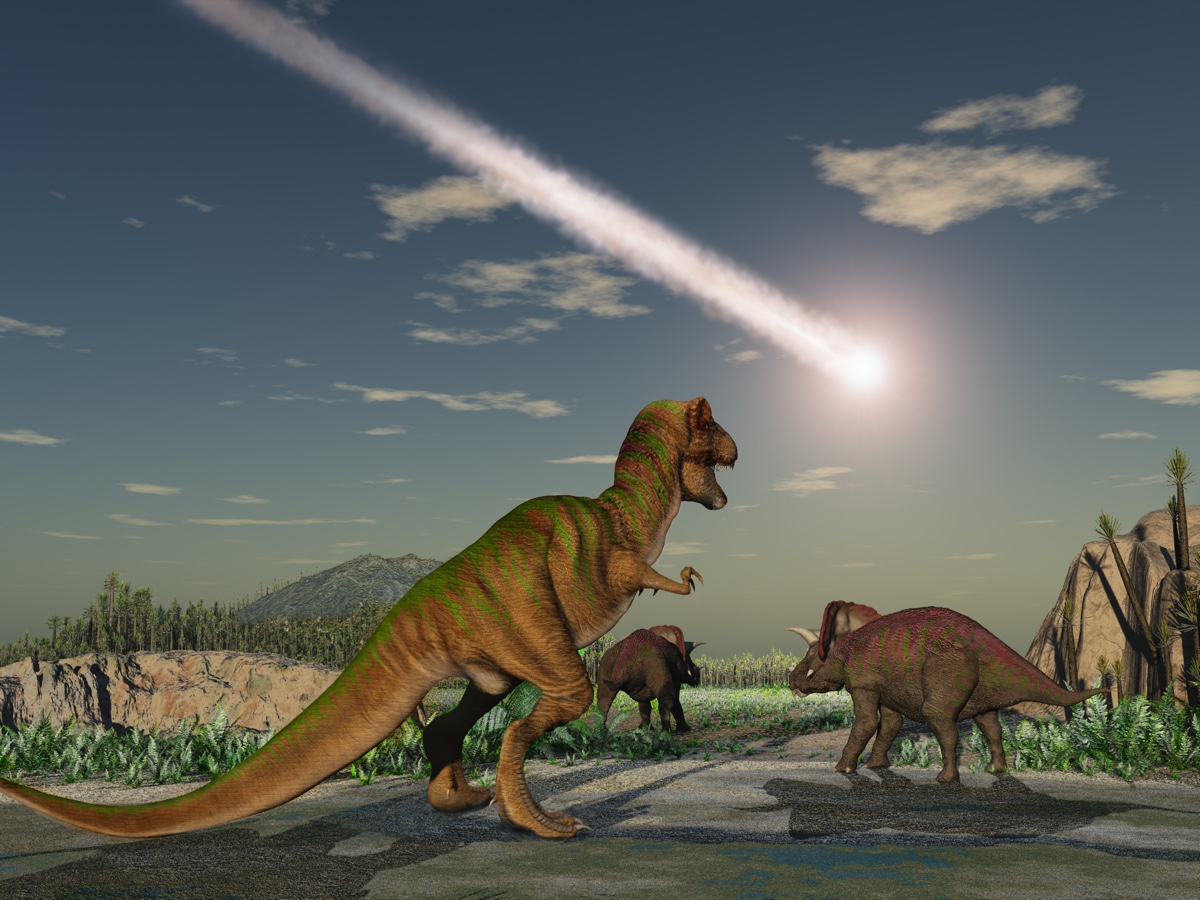Dinosaurs Might Have Survived the Asteroid, Had It Hit Almost Anywhere Else

The age of dinosaurs met an unlikely end — because had the cosmic impact that doomed it hit just about anywhere else on the planet, the "terrible lizards" might still roam the Earth, a new study finds.
The impact of an asteroid about 6 miles (10 kilometers) wide about 66 million years ago created a crater more than 110 miles (180 km) across near what is now the town of Chicxulub (CHEEK-sheh-loob) in Mexico's Yucatán Peninsula. The meteor strike would have released as much energy as 100 trillion tons of TNT, more than a billion times more than the atom bombs that destroyed Hiroshima and Nagasaki combined. The blast is thought to have ended the age of dinosaurs, killing off more than 75 percent of all land and sea animals.
Prior work suggested the Chicxulub impact would have lofted huge amounts of ash, soot and dust into the atmosphere, choking off the amount of sunlight reaching Earth's surface by as much as 80 percent. This would have caused Earth's surface to rapidly cool, leading to a so-called "impact winter" that would have killed off plants, causing a global collapse of terrestrial and marine food webs. [Wipe Out: History's 7 Most Mysterious Extinctions]
To explain why the Chicxulub impact winter proved so catastrophic, Japanese scientists previously suggested the superhot debris from the meteor strike not only caused wildfires across the planet, but also ignited rocks loaded with hydrocarbon molecules such as oil. They calculated that such oily rocks would have generated vast amounts of soot.
The amount of hydrocarbons in rocks varies widely depending on location. In the new study, the Japanese researchers analyzed the places on Earth where an asteroid impact could have happened to cause the level of devastation seen with the Chicxulub event.
The scientists now find the asteroid that wiped out the dinosaurs happened to hit an unlucky spot — had it landed in about 87 percent of anywhere else on Earth, the mass extinction might not have occurred.
"The probability of the mass extinction occurring was only 13 percent," said study lead author Kunio Kaiho, a geochemist at Tohoku University in Sendai, Japan.
Sign up for the Live Science daily newsletter now
Get the world’s most fascinating discoveries delivered straight to your inbox.
The scientists ran computer models simulating the amount of soot that asteroid impacts would have generated depending on the amount of hydrocarbons in the ground. They next estimated the climate effects caused by these different impact scenarios.
The researchers calculated the level of climate change needed to cause a mass extinction was a 14.4 to 18 degrees Fahrenheit (8 to 10 degrees Celsius) drop in global average surface air temperatures. This would involve an asteroid impact sending 385 million tons (350 million metric tons) of soot into the stratosphere.
The scientists found that a mass extinction would have occurred from the impact only if it had hit 13 percent of the surface of the Earth, including both land and oceans. "If the asteroid had hit a low- to medium-level hydrocarbon area on Earth, occupying approximately 87 percent of the Earth's surface, mass extinction could not have occurred," Kaiho told Live Science.
The scientists are also analyzing the level of climate change "caused by large volcanic eruptions that may have contributed to other mass extinctions," Kaiho said. "It is hoped that the results will lead to further understanding of the processes behind those mass extinctions."
Kaiho and his colleague Naga Oshima at the Meteorological Research Institute in Tsukuba, Japan, detailed their findings online today (Nov. 9) in the journal Scientific Reports.
Original article on Live Science.










